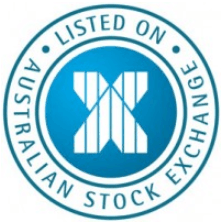
Chris Weston, Chief Market Strategist at IG Markets
The key talking point on the desk today is what exactly is going on with the USD and whether it is time to get back into longs.
I have been bullish on the USD of late, however while the longer-term prospects of the USD are strong, there are other forces in play in the short-term which is keeping the USD bulls away. I was looking to work offers into 1.3800 on EUR/USD, but am staying out now until a more compelling bearish technical picture develops and clearly shorting AUD/USD is a no-go and if anything looks set to test 0.9500.
USD/JPY at a key juncture
USD/JPY was smashed yesterday through European trade as BoJ governor Kuroda gave an upbeat assessment of the Japanese economy. Subsequently those positioned short JPY in the hope of hints of easing in the months to come, covered and pushed back their expectations to July through to September. The pair has found support at the February 4 uptrend at 101.55, but really needs to break back through 102.00 to get any traction. It seems this pair is central and appears to be driving the USD against other pairs, although with the FOMC minutes in focus in US trade this could prove to be USD positive.
It was also positive to see the February US JOLTs (a measure of job vacancies) report coming out at the highest level since 2008 and continue the strong trend of improvement. The report is broken into hire levels and ‘separations’, which include those who have quit, layoffs (both voluntary and involuntary) and retirement, and if you net the two off you naturally see a very strong correlation with the US payrolls report. This is actually a gauge Janet Yellen looks at very closely and while the index is a lagging indicator, the good numbers here put upside risks for revisions for the February payrolls report. It’s worth bearing in mind that the numbers are still well below the levels before the GFC hit, but this data will please the Fed and partially mitigates the chance of a turn down in jobs.
Flows into emerging markets continue
The flows into emerging markets continue and it’s interesting to see the 9% outperformance of the MSCI emerging market index against the MSCI world index since the start of March. We’ve seen solid flows into the like of the Brazilian real, Chilean peso and Turkish lira of late, as traders search for yield, effectively being paid to hold positions.
However there are signs these currencies are getting a little overbought, so if the Fed minutes causes the market to refocus on the Fed consensus of putting up the funds rate to 1% by December 2015 (the market is currently only pricing in 74 basis points), then we could see some heat coming out of these pairs.
It’s also interesting to see the strong inverse correlation between NASDAQ biotech ETF and IShare emerging market ETF. Perhaps this could also explain some of the recent USD weakness as well.
Asia has seen mixed trade again and it’s interesting to see the breakdown in correlations among the various benchmarks. The ASX 200 is the index of note having printed a higher high today, just closing above the March 7 high of 5462.3. Volume has been strong (currently $5.25 billion) today, which is exactly what you want to see on a break out, with the top 10 big names right at the centre of the move. If you look at the 50-day moving average, 57% of companies are above, which, compared to the prior high in March where 73% of companies were above, seems low. This suggests that there is more room to run in the short term, especially as only 21% of the market are 5% or less from a 52-week high. David Jones getting a bid for $4.00 a share is always going to help retail as well, especially when you see the South African-based acquirer happy to pay 24x 2014 earnings.
The fact that the index is up when the Nikkei is down 2% is bullish, given this is the strongest correlated market.
In China the PBoC lowered the daily fix again, taking the mid-point down 32 basis points. China seems in a better spot and while the equity market is flat, all eyes now fall on tomorrow’s exports figures. Traders will always look at Korea’s export print, given the strong correlation to China’s, while they come out the week prior.
Last week we saw a 5.2% increase in Korea’s numbers, so it suggests China’s numbers could rebound tomorrow. We’ve already seen a mini stimulus on April 2 (i.e. lowering corporate tax for small enterprises, reconstruction of public housing and pulling forward railway construction projects), however the market expects more. This is helping sentiment in a number of developed and emerging markets, especially those who have good two way trade in China.
Europe looks like it will open on a flat note, with traders initially focusing on trade numbers in German and the UK, while German also provides its current account numbers. An increase in Germans surplus is expected, so this could provide further upside to the EUR. The Fed minutes will get the lion’s share of attention, although further narrative comes out from Fed member Charles Evans (dove) and Daniel Tarullo (modestly hawkish) in early Asia trade.